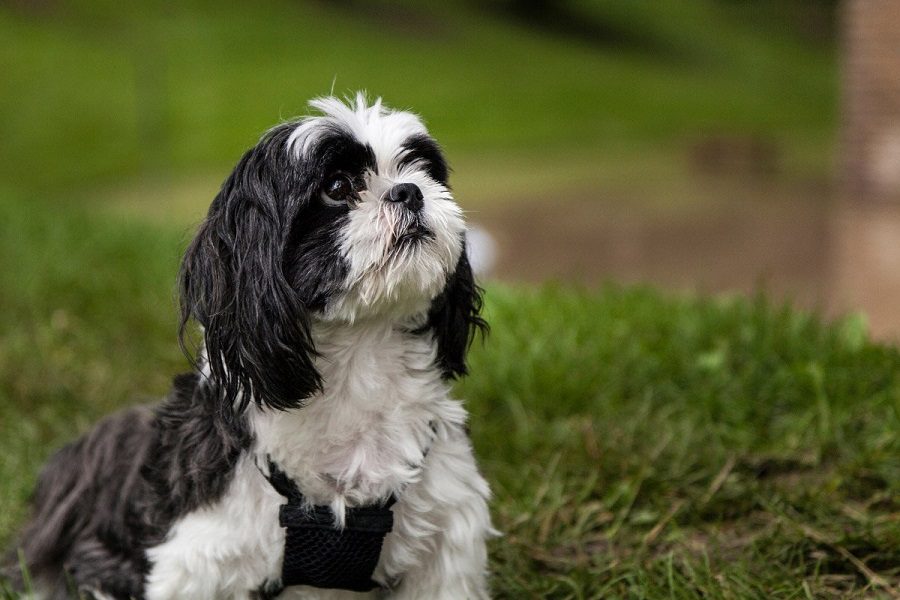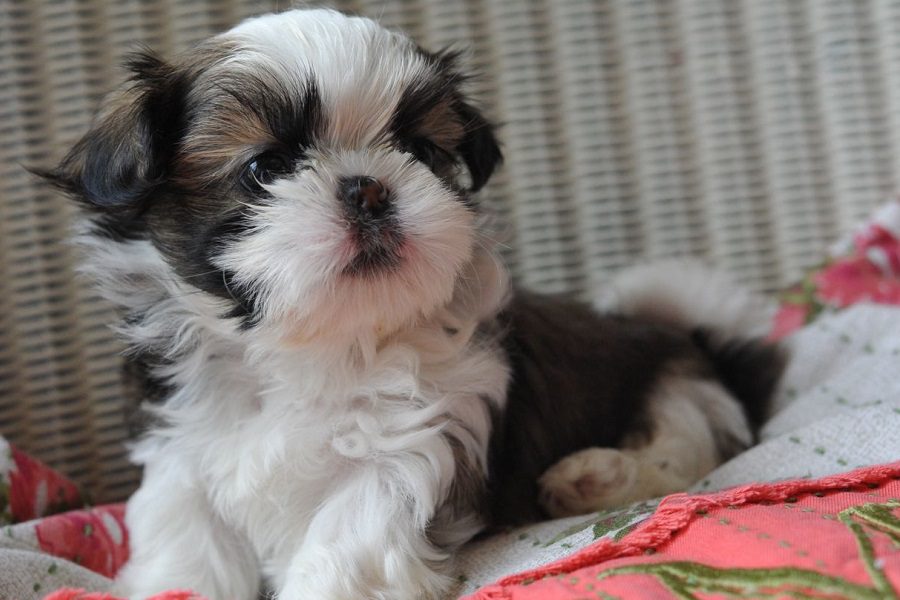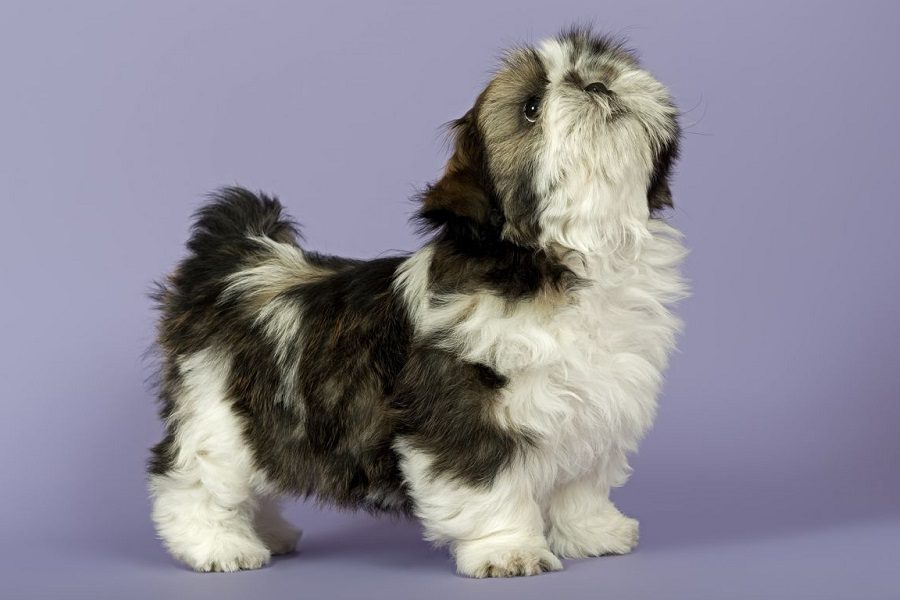Last Updated: 2 years ago
Shih Tzu’s are among the cutest and cuddliest of canines on the planet.
Part of that appeal is no doubt due to their coat and eye color.
These dogs come in a delightful array of shade combinations and patterns.
In fact, it is extremely uncommon to find two Shih Tzus that have exactly the same coat color.
In this article, we will provide you with an all-encompassing guide to Shih Tzu coat and eye colors.
The first thing you should know about the coat color of the Shih Tzu is that it is likely to change.
So, you shouldn’t base your purchasing decision when acquiring your pup upon the color of the coat.
The coat of a Shih Tzu may be a single color or it may be a combination of two or more colors.
There are a number of Shih Tzu coat color classifications.
Solid Shih Tzu Coat Colors
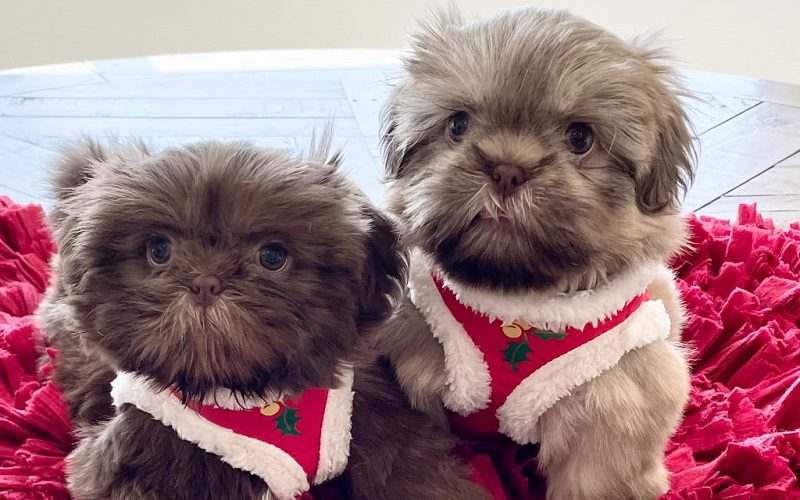
Common colors of Shih Tzus:
Solid Colors
Black – It is quite a rarity to find a pure black Shih Tzu.
Pure black means that there are no other colors at all on the coat.
White – A white Shih Tzu must be completely white with absolutely no other color on the dog at all. The nose of the dog, though, will be black.
Silver – From a distance, a silver Shih Tzu my resemble a white one. But, as you get closer you will see a shiny silver color, especially in natural light.
Blue – Although officially classified as blue, the color of a blue ShihTzu is actually more of a charcoal color. However, when seen in natural light,it will give off a brilliant blue tone.
Red – A red ShihTzu will appear to be dark orange in color.
Liver – An official Shih Tzu color of liver does not refer to the color of the coat but to the points of the dog. To be classified as liver, the points will be liver or brown colored.
Gold – A gold colored Shih Tzu will appear to be yellowish brown.
Brindle – A brindle Shih Tzu will have one main color that is streaked through with another color.
Two Color Combinations
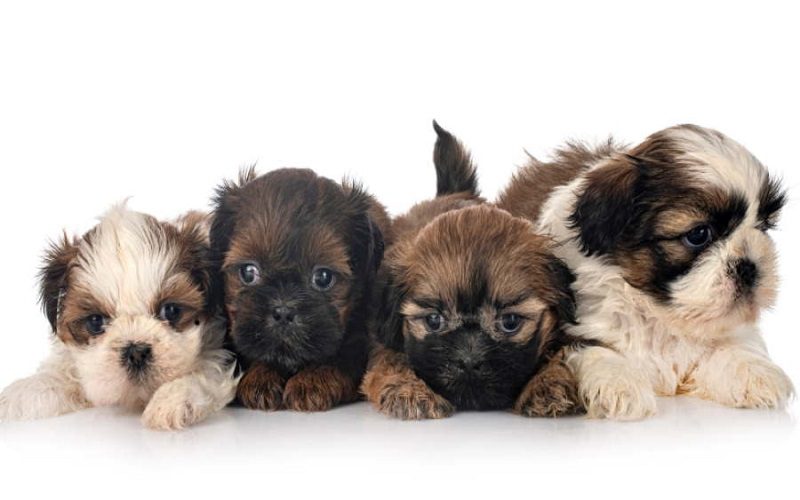
It is extremely common to have dual colors in Shih Tzus.
More often than not, the combination will be of white with another color.
In rare instances, there may even be splotches of a third color.
Let’s take a look at the most common combinations based on base colors:
Base Color White:
- White and Black
- White and Red
- White and Grey
- White and Charcoal
- White and Gold
- White and Brindle
- White and Blue
- Base Color Red:
- Red and Black
- Red and Gold
- Red and Charcoal
- Red and Grey
- Red and White/ Silver
- Base Color Black:
- Black and gold
- Black and Brindle
- Black and Silver
- Black and Liver
Three Color Combinations
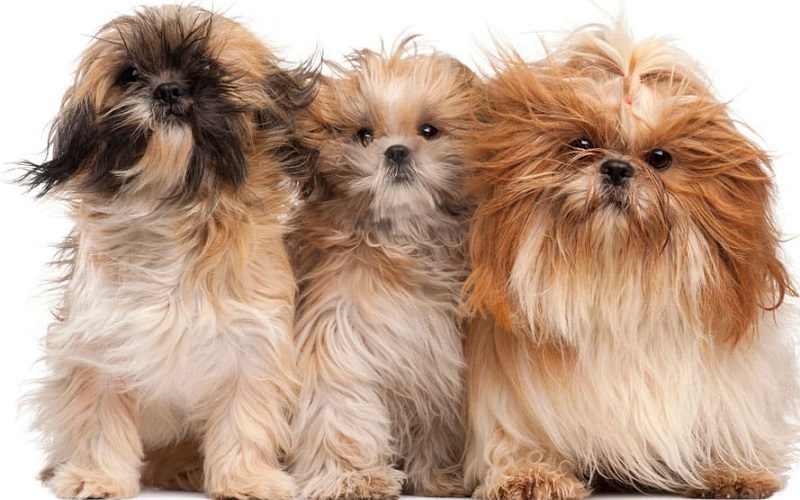
It is pretty rare to see a three color combination Shih Tzu.
However, if you do happen to come across one, you may not even know it.
At first glance, you may see just two colors. It is only on closer inspection that the third hue comes to light.
The most common three color combinations of Shih Tzus are:
- Black, Silver, and White
- Silver, Gold, and White
- Black, Gold, and White
- White, Gold and Red
Coat Patterns
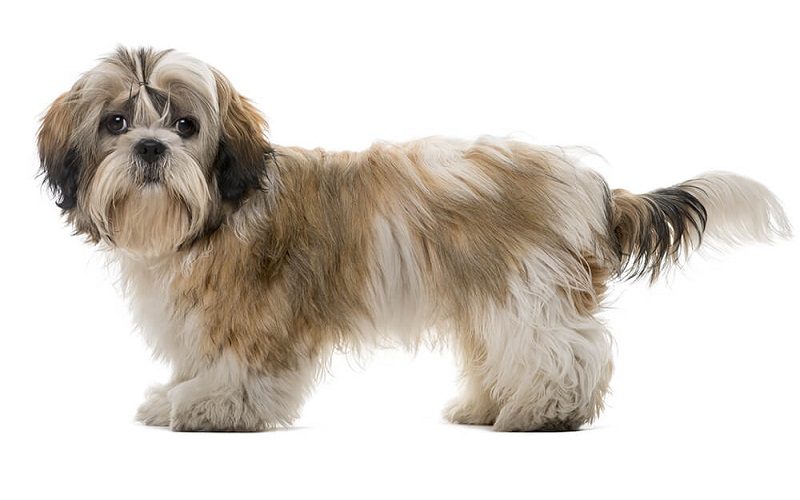
Shih Tzus come in a range of coat patterns as follows:
Blaze – characterized by a streak of white between the eyes.
Flare – Characterized by continuation of the blaze streak that goes tight on through to the top of the skull.
Collar / Shawl – characterized by a different color around the neck.
The most common color is white.
Tuxedo – characterized by a white on the chest on an otherwise single colored dog.
The patch of white may also be on the feet or chin of the Shih Tzu.
Saddle – characterized by a large swathe of white on the back of the dog.
Shih Tzu puppy coats are darker when they are first born.
As they grow from puppy to adult, they may have a drastic change in color.
Their hair will usually remain soft and silky throughout the entire course of their lifespan. The exception to this is the British Shih Tzu.
Shih Tzus will grown into their adult coat by ten months of age.
When growing into the adult coat, the hair will mat much more easily.
This will require daily brushing.
An adult Shih Tzu will require brushing in accord with the texture of its coat. This may range from daily to weekly.
The softer the coat that your Shih Tzu has, the more quickly it will become tangled. Very thick and long coats will also tangle more quickly.
So, the longer and fuller the hair of your dog, the more time you will need to devote to grooming.
The more attention you give to the grooming of your dog’s hair, the better pigmentation it will have.
The coat color for Shih Tzus runs quite deep. However some pigments will fade as the dog ages with new shades taking their place.
Diet will also have an important role to play in the health of your Shih Tzu’s coat.
And the health of the coat is vital to the overall good health of your pet.
Protein is the main component of hair follicles.
That makes it vital to get a good source of lean protein in the diet of your Shih Tzu.
If your Shih Tzu is deficient in protein, its hair will become dull, dry and brittle.
Fatty acids are also important to the healthy coat of your Shih Tzu.
Be sure to feed your dog plenty of Omega-3 fatty acids. Fatty fish such as salmon will provide both lean protein and fatty acids.
Shih Tzu Eye Color
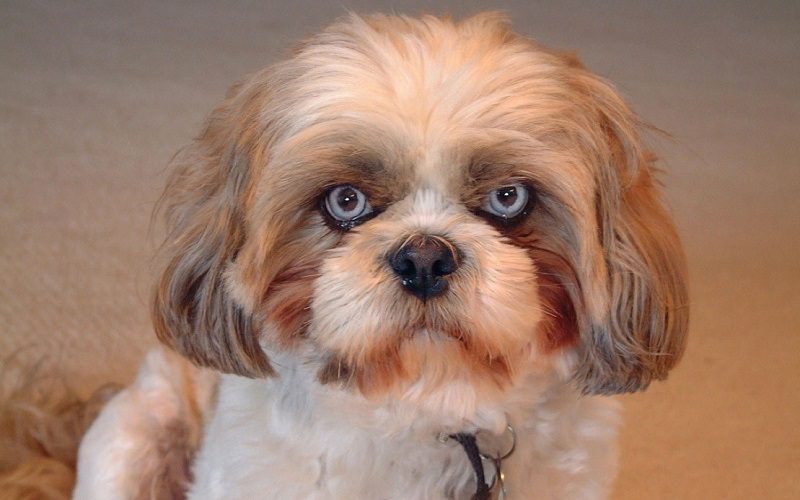
The color of your Shih Tzu’s eyes is not determined by the color of the coat.
Rather, it’s the color of the nose and muzzle that sets the color of the eyes.
The standard eye color for the Shih Tzu is black.
However, it is common for dogs that have a liver or blue coat to have a different eye color. A liver coated dog will more than likely have light brown or golden colored eyes.
If your Shih Tzu has a blue coat, it is quite likely that the eyes will also be blue.
All Shih Tzu puppies are born with blue eyes.
After a few weeks, the color will likely darken to the most common black color. Some puppies will take up to four months for their permanent color to take shape.
Blue eyes in a Shih Tzu are quite rare. Sometimes they are an indication of health problems.
This is the case if the eyes were black or brown but have recently turned blue or cloudy.
Q and A
This may be a sign that your dog has glaucoma or cataracts. If you suspect that this is the case, you should immediately take your dog to the veterinarian.
Some common questions:
Are black Shih Tzus rare?
No, black Shih Tzu’s are not rare, but they are less common than other colors.
You will generally pay more money for a black Shih Tzu.
Can a Shih Tzu have blue eyes?
Yes, they can. However, this is the result of a genetic defect, so is quite rare.
Blue eyes may also be an indication of cataracts or keratitis.
If the eye color of your Shih Tzu changes from black to blue, you should check with your veterinarian.
Do Shih Tzu puppies change color?
Yes, this is usually the case. Shih Tzu coat color often changes at about 12 months of age.
The coat may become either more pale or darker. Black and white Shih Tzus will not change color.
What does Shih Tzu mean?
It is a Chinese phrase that means ‘miniature lion.’
Check out our review of the best dog bed for shih tzu. Help your dog sleep better!
Summary
The Shih Tzu breed comes in a wonderful variety of coat colors that enhance the beauty and cuteness of this most special of pets.
Remember, though, that the color of a puppy may change as the dog grows.
Eye color is usually black, but may change in accordance with the points of the dog.
Resources:

